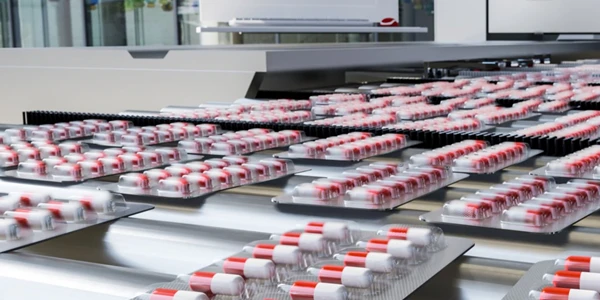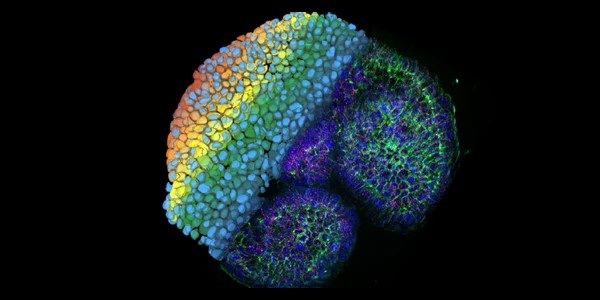Advancing Healthcare: The Journey of Biomarker Discovery to Clinical Implementation

Mass Spectrometry (MS) based proteomics has a rich and interesting history. In the early 1990s, MS was gaining significance as a platform for identifying and quantifying proteins and quickly became the method of choice in proteome research due to its sensitivity, accuracy, and resolution. Since that time the field of proteomics has grown by leaps and bounds – and it is no coincidence that biological MS instrumentation has witnessed a similar rate of innovation and development. Today, the field of proteomics benefits from rigorous sample enrichment techniques, high-performance MS analysis, and powerful data analysis software to allow investigations into a broader array of cell types with a deeper level of quantitative power than ever before.
The focus in this edition of Mass Spec Matters is state-of-the-art MS techniques and technologies for complete proteomic workflow analysis. In this initial article, we explore the journey from proteome discovery research, to biomarker verification and validation, to clinical implementation.
The Foundation of Biomarker Discovery Research
In biomarker discovery, techniques and MS instrumentation must be designed to handle large numbers of samples in order to resolve and provide quantitative data regarding significance. The discovery phase relies on lower throughput, high accuracy, and high-resolution, to mine for relevant proteins quantitatively associated with a clinical indication or disease.
The sensitivity and accuracy of MS instrumentation has proved paramount to biomarker discovery. As an example of a capable platform, the latest Orbitrap device from Thermo Fisher, the Fusion Lumos Tribrid MS, generates ultrahigh resolution data of up to 500,000 to 1,000,000 FWHM at 200 m/z. This incredible power comes from the advanced Orbitrap technology which features nanometer-range accuracy electrodes, high voltage supplies, and mass-to-charge measurements delivered as a function of oscillation frequency. When paired with Thermo's high-resolution accurate-mass (HRAM) data processing solutions, the platform has the ability to generate extensive peptide/protein lists from complex sample backgrounds.
Quantitative Analysis in Biomarker Identification
After identification, a second critical component of biomarker discovery is quantitation. MS instrumentation must achieve the sensitivity and selectivity to provide reliable quantitation and definitive results. Stable isotope labelling and isobaric tagging greatly assist in quantitation, however MS instruments that can achieve the required metrics in a single platform, and a single run, offer huge advantages in moving the research from the discovery phase to verification/validation. In this respect, information rich discovery data must be matched with powerful back-end data processing solutions, such as Thermo Scientific Proteome Discoverer software, in order to maximize the odds of success.
Transitioning to Biomarker Verification and Validation
In the switch to verification and validation, fewer numbers of putative protein biomarkers are now targeted and larger numbers of samples are now analyzed. This accompanies a change in priorities to higher throughput and high sensitivity over accuracy and resolution. The job has typically been the domain of triple quadrupole instruments, although recent hybrid-quadrupole-orbitrap or Q-TOF instruments have also excelled in this capacity.
The objective in this phase is to measure the abundance of known analytes, and instruments like the Thermo TSQ Triple Quadrupole LC-MS offer the speed, sensitivity, and robustness to handle complex data acquisition and complex matrices. Advanced features like segmented quadrupole analyzers, high resolution single reaction monitoring (SRM), and enhanced detectors offer the performance required for high confidence analysis. Data processing solutions such as the Thermo Pinpoint software assists by incorporating predictive methods with preliminary data evaluation in order to arrive at the optimal conditions for quantitative analysis.
In the end, positive verification of a putative biomarker arises from statistical differences over control markers. Whereas, positive validation results from improved biomarker sensitivity and selectivity over current tests and standards of care.
Clinical Implementation of Biomarker Tests
A final phase in the biomarker journey is clinical implementation. Many MS-based laboratory developed tests (LDTs) have been successfully implemented for in-house clinical use. Research oriented biomarker tests have been implemented and commercialized as well. Although not a protein biomarker, Vitamin D is a model example of a validated MS-based test that has recently made the leap from LDT to FDA cleared clinical diagnostic – a very notable achievement.
SCIEX has created a complete solution with their Vitamin D 200 Assay Kit, offering not only superior testing performance, but accessibility to suit the clinical lab environment. The assay addresses several barriers to clinical adoption by simplifying the setup, operation, and maintenance of the MS platform, while also providing easy to use reagents and protocols designed to assist the operator.
The SCIEX Vitamin D assay goes a long way towards solving the chicken or the egg conundrum – MS-based clinical assays can offer superior performance BUT clinical labs have neither the instrumentation or the expertise to handle the workflow. With implementation of this FDA cleared Vitamin D Test, and insurance reimbursements to complement, we may have truly entered a new era of MS-based clinical diagnostics and precision medicine.
Read a superb review on biomarker discovery and validation
Frequently Asked Questions (FAQs)
What is the role of mass spectrometry in biomarker discovery? Mass spectrometry (MS) is crucial in biomarker discovery due to its high sensitivity, accuracy, and resolution, allowing for the identification and quantification of proteins from complex biological samples. It's essential for mining relevant proteins associated with specific clinical indications or diseases.
How does biomarker verification differ from validation? Biomarker verification typically involves confirming the presence and initial significance of putative biomarkers, often with fewer targets and larger sample sets. Validation, on the other hand, focuses on rigorously assessing the biomarker's sensitivity, selectivity, and overall performance against established standards of care to ensure its clinical utility.
What challenges exist in bringing a biomarker to clinical implementation? Challenges include the need for high-throughput and sensitive analytical methods, ensuring regulatory approval (like FDA clearance), simplifying complex MS workflows for clinical lab environments, and securing insurance reimbursement to make the tests widely accessible.
Can mass spectrometry-based tests be used in routine clinical diagnostics? Yes, many MS-based laboratory developed tests (LDTs) are successfully used in-house for clinical purposes. Furthermore, some, like the Vitamin D assay mentioned, have achieved FDA clearance, marking a significant step towards their broader adoption in routine clinical diagnostics and precision medicine.










